PEOPLE
FACULTY
-
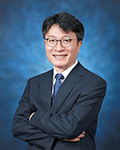 Ahn, Kyung Hyun
Ahn, Kyung Hyun- Position: Professor
- Major: Microrheology
- Office: Building 302, Room 811 | Lab of Microrheology
- E-mail: ahnnet@snu.ac.kr
- Tel: +82-2-880-1879
The goal of our research is to understand flow-induced microstructure and its rheological properties, to understand rheological phenomena of particulate suspensions in complex flow fields, and to link between micro-scale and macro-scale dynamics using computer simulation. Our lab is pioneering in both international collaborations and university-industry relationships.
-
 Char, Kookheon
Char, Kookheon- Position: Professor
- Major: Intelligent Hybrid Materials
- Office: Building 302, Room 725
- E-mail: khchar@snu.ac.kr
- Tel: +82-2-880-7431
Our laboratory mainly focuses on the fundamental and applied aspects of thin films involving macromolecules and nano-objects. The current emphasis of our research program is placed on the fabrication and characterization of block copolymer nanostructures, ultrathin functional multilayer films, organic/inorganic hybridization. We have already established synthetic schemes to prepare well-defined nanomaterials such as block copolymers, quantum dots, and sulfur composite. Furthermore, our fundamental knowledge on the interfacial manipulation at the molecular level can be applied to realize integrated devices or hierarchical structures with unique functions.
-
 Choi, Jang Wook
Choi, Jang Wook- Position: Professor
- Major: Electrochemistry & Multi-Scale Energy Materials
- Office: Building 302, Room 724 | Multi-Scale Energy Science & Technology Lab. 515
- E-mail: jangwookchoi@snu.ac.kr
- Tel: +82-2-880-1653
Despite recent progress in rechargeable batteries, their practical performance must be improved to meet the demands in large-scale power sources such as electric vehicles (EV) and energy storage systems (ESS). In this regard, our group has focused on developing materials for next-generation lithium ion batteries (nickel-rich cathode, sulfur cathode, lithium metal anode, silicon anode, silicon binder) and post-lithium ion battery systems (all-solid-state batteries, aqueous zinc batteries, and electrochemical desalination).
-
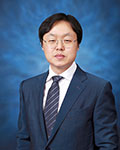 Chung, In
Chung, In- Position: Associate Professor
- Major: Inorganic Chemistry
- Office: Building 302, Room 919
- E-mail: inchung@snu.ac.kr
- Tel: +82-2-880-7408
There are three major research topics in our laboratory. First, metal halide perovskite materials for optoelectronic applications such as photovoltaics, photodetectors, and light emitting diodes. The second is research on thermoelectric materials. Thermoelectric materials allow energy conversion between heat and electricity, thereby providing alternative routes for power generation and cooling. Third, studies on electronic correlations and magnetism in transition metal compounds are actively under way.
-
 Hahn, Ji-Sook
Hahn, Ji-Sook- Position: Professor
- Major: Biomolecular Engineering
- Office: Building 302, Room 915 | Biomolecular Engineering Lab
- E-mail: hahnjs@snu.ac.kr
- Tel: +82-2-880-9228
Our research focuses on understanding and redesigning cellular regulatory networks. We are interested in elucidating signal transduction pathways in cellular adaptation to various environmental stress conditions. In addition, we are applying metabolic engineering and synthetic biology tools to develop robust yeast and methanotroph strains for the production of chemicals and biofuels from biomass.
-
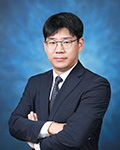 Hwang, Nathaniel S.
Hwang, Nathaniel S.- Position: Professor
- Major: Biomedical Engineering
- Office: Building 302, Room 913 | Biomimetic Materials and Stem Cell Engineering Lab
- E-mail: nshwang@snu.ac.kr
- Tel: +82-2-880-1882
Our lab is studying about tissue engineering. In this research field, knowledge about physiological systems, diseases, and technological applications are needed to create artificial tissues and to regenerate damaged tissues. We focus on exploration of new methods of bone/cartilage regeneration, neuronal system reconstruction, and physiological disease therapies by using functional biomaterials, stem cell differentiation, and gene/drug delivery systems.
-
 Hyeon, Taeghwan
Hyeon, Taeghwan- Position: Distinguished Professor
- Major: Synthesis and Application of Nanoparticles
- Office: Building 302, Room 809
- E-mail: thyeon@snu.ac.kr
- Tel: +82-2-880-7150
The goal of our research group is the nanomaterials-based innovation of the present technologies in the aspect of biotechnology, medicine, and green energy. Also, revealing fundamental mechanisms of nucleation and growth to fully understand and control the nanoparticle synthesis is one of our ultimate goals. To achieve our research goals, we use multidisciplinary approaches and state-of-the-art characterization methods.
Synthesis of nanoparticles can be achieved through various paths. Specifically, our group developed a fascinating, easy-to-scale-up method; now well known as “heat-up process”. This method is powerful because not only can it produce uniform sized nanoparticles without size selection process, but also it can be applicable to various kinds of transition metals. We also used non-hydrolytic sol-gel reactions to synthesize nanoparticles having various unique properties. -
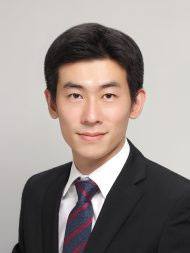 Kang, Jong Hun
Kang, Jong Hun- Position: Assistant Professor
- Major: Zeolites & Heterogeneous Catalysis
- Office: Building 302, Room 626
- E-mail: jonghunkang@snu.ac.kr
- Tel: +82-2-880-1880
We Focus on the development of synthetic pathways for new zeolitic materials that can show outstanding performances in major fields of industrial chemistry such as catalysis and separation, based on various synthetic technologies including design of new organic structure-directing agents (OSDAs), innovative hydrothermal crystallization systems, topotactic transformation, postsynthetic treatment. We ultimately aim at a priori design heterogeneous catalysts that can cater to ever-escalating industrial and environmental needs.
-
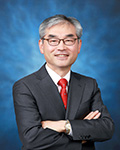 Kim, ByungGee
Kim, ByungGee- Position: Professor
- Major: Protein and Metabolic Engineering
- Office: Building 302, Room 910
- E-mail: byungkim@snu.ac.kr
- Tel: +82-2-880-6774
In our laboratory, mass production of useful biochemicals (mainly fine chemicals, proteins, carbohydrates, metabolites) present in nature is attempted by using various microorganisms and industrial enzymes. To achieve this goal, we are interested in developing any biotechnological, i.e. in vitro and in vivo, methods advantageous over chemical synthetic methods. In the case of cellular reactions, we are interested in following quantitative approaches to optimize and maximize gene expressions and metabolic capacity by designing new reactions or deletion of existing reactions using recombinant DNA technology, and to control involved gene regulation such as transcription factors and/or single enzyme activity using synthetic biology approaches. In addition, we are keen to combine traditional biochemical reaction engineering approaches, such as developing novel reactors, design new reactions and optimizing operation parameters. We also use new analytical and quantitative techniques evolved recently, i.e. metabolomics, genomics, proteomics, bioinformatics, biochips developing high through-put screening system and system biology, which become more essential for their roles in understanding changes in cell physiology, achieving precise control of cell metabolisms and yielding improvement in target reaction systems. Finally, to predict and design new properties of proteins and cells, we are interested in developing computer modeling approaches for screening and designing new enzymes, changing their properties and cellular metabolism.
-
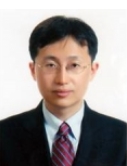 Kim, Dae-Hyeong
Kim, Dae-Hyeong- Position: Professor
- Major: Flexible Electronics
- Office: Building 302, Room 816
- E-mail: dkim98@snu.ac.kr
- Tel: +82-2-880-1634
Our group aims to develop high performance flexible and stretchable electronic devices incorporated with high-quality nanoscale materials, which enable novel multifunctional biomedical and optoelectronic systems.
Our first objective is to achieve significant improvement in current biomedical devices and/or to invent new and unprecedented medical systems that innovate clinical procedures and surgeries with the aim to help patients. Our devices can be integrated with the human body via fully implantable, minimally invasive, and skin-laminated modes, pursuing capabilities of high resolution/sensitivity health monitoring, real time data storage/analysis/diagnosis, and feedback therapeutic actuation/targeted drug delivery.
Our second objective is to develop high-performance soft optoelectronic devices using quantum dot nanocrystals, perovskite thin films, two dimensional nanomaterials, and unconventional processing and device technologies. Device examples include the ultrathin and transparent display, curved image sensor array, and highly efficient photovoltaic devices. -
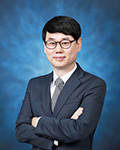 Kim, Byung-Soo
Kim, Byung-Soo- Position: Professor
- Major: Chemical Engineering
- Office: Building 302, Room 807
- E-mail: byungskim@snu.ac.kr
- Tel: +82-2-880-1509
The B.S. Kim Laboratory develops therapies to repair damaged tissues or organs and to eradicate cancer. The therapies employ cells and biomaterials that modulate the body’s immune system.
-
 Kim, Do Heui
Kim, Do Heui- Position: Professor
- Major: Energy and Environmental Catalyst
- Office: Building 302, Room 817 | Lab. for Energy and Environmental Catalysis
- E-mail: dohkim@snu.ac.kr
- Tel: +82-2-880-1633
Catalysis is a crucial technology which changes the rate of a chemical reaction. Our main research interests lie in the area of heterogeneous catalysis and reaction engineering, especially for the sustainable energy and the environment. Our research goal is to search for and develop the underlying chemical and engineering rules governing catalysis, especially regarding the relationship between the active sites and catalytic performance.
-
 Kim, So Youn
Kim, So Youn- Position: Assistant Professor
- Major: Polymers and Colloids
- Office: Building 302, Room 625
- E-mail: soyounkim@snu.ac.kr
- Tel: +82-2-880-1505
The research group is interested in understanding fundamental interactions in soft material from the molecular level and relating them to the bulk state properties. The specialty of the group is to characterize the colloidal dispersions/microstructures in details with extensive scattering techniques and to relate them to dynamics at interface and physical properties in bulk. The current interests include dispersions of colloids and polymers in non-equilibrium states, interfacial properties of block copolymers and polymer nanocomposites and dispersions of 2D colloids.
-
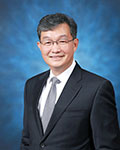 Kim, Jae Jeong
Kim, Jae Jeong- Position: Professor
- Major: Semiconductor process
- Office: Building 302, Room 920 | Electronics Processing Research Laboratory
- E-mail: jkimm@snu.ac.kr
- Tel: +82-2-880-8863
We are studying the composition of electrolytes in copper electroplating in semiconductor processing, especially the effects of additives on copper crystallinity and thin film properties, and the filling of silicon through electrodes (TSV). Furthermore, the research focuses on studying the mechanism of action and degradation of plating additives. Also, as a research on the planarization process and the subsequent cleaning process in the semiconductor process, we are working on the cleaning process on the metal substrate and the silicon base substrate using the reactivity of the metal. In addition, research is being conducted on the application of electrochemically synthesized catalysts to carbon dioxide reduction, electrolysis, and the like.
-
 Kim, Jihyun
Kim, Jihyun- Position: Professor
- Major: Semiconductor Process
- Office: Building 302, Room 726
- E-mail: jihyunkim@snu.ac.kr
- Tel: +82-2-880-8346
Our research covers multidisciplinary research on the basic properties of semiconductor materials to their applications for electronic device fabrication. The research area includes multidimensional from one- to three-dimensional semiconductor structures, IR to deep-UV optoelectronic devices, next-generation compound semiconductor materials and their applications for various kinds of electronic and optoelectronic devices. Ultra-wide bandgap semiconductor for next-generation high-power devices, photodetectors and high performance optoelectronic devices are systematically investigated through the combination of physical modelling and experimental approaches.
-
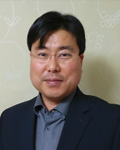 Kim, Youn Sang
Kim, Youn Sang- Position: Professor
- Major: Nano Interface Material Process
- Office: Building 302, Room 818 | Nano Matrix Lab
- E-mail: younskim@snu.ac.kr
- Tel: +82-2-880-7411
The Nano Matrix Lab researches organic/inorganic/oxide transistors and sensors, energy harvesting devices, next-generation high-efficiency energy storage devices, and functional nano-structure synthesis using the properties of nanomaterials and various interfacial processes. Through the collaboration of various research fields, we are developing the core source technology of nanoelectronic materials. In addition, we aim to do efficient research by industry-academia cooperation and have various efforts to cultivate challenging and creative professionals.
-
 Kim, Young Gyu
Kim, Young Gyu- Position: Professor
- Major: Organic Synthesis
- Office: Building 302, Room 728 | Fine Chemicals Lab.
- E-mail: ygkim@snu.ac.kr
- Tel: +82-2-880-8802
Our lab has been focusing on research of high value-added fine chemicals such as pharmaceutical compounds, high performance molecules for electronic devices, high explosive materials, and other functionally specified target compounds based on the organic synthetic methodology. Another area of interest is development of novel stereo selective methods for asymmetric synthesis of organic compounds with biologically activity as well as chirality. It is our hope that we can design and prepare the target compounds with various functionalities based on better understanding of fundamental principles and knowledge on chemical reactivity and selectivity of molecules.
-
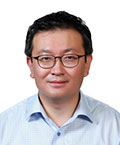 Lee, Changha
Lee, Changha- Position: Associate Professor
- Major: Environmental Engineering
- Office: Building 302, Room 916 | Advanced Redox Technology Lab
- E-mail: leechangha@snu.ac.kr
- Tel: +82-2-880-8630
The major research goals of the Advanced Redox Technologies (ART) laboratory are to develop novel environmental remediation technologies (water treatment, air purification, disinfection, etc.) based on (photo) chemical reactions that are innovative, environmentally-friendly, and energy-efficient, and to study the fate and behaviors of emerging contaminants in natural media and treatment processes.
-
 Lee, Jong Min
Lee, Jong Min- Position: Professor
- Major: Advanced Process Control & Process Systems Engineering
- Office: Building 302, Room 723
- E-mail: jongmin@snu.ac.kr
- Tel: +82-2-880-1878
The SNU Energy Process Engineering Laboratory (EPEL) not only focuses on the existing fossil fuel-based energy production and chemical processes but also the development of related technologies for the nonconventional energy processes such as oils and biodiesel to enhance the economic efficiency. In particular, we are concentrating on energy saving and the development of sustainable operation strategies by developing optimization and model-based control technology.
-
 Lee, Jong-Chan
Lee, Jong-Chan- Position: Professor, Head of the School of Biological and Chemical Engineering
- Major: Polymer Chemistry
- Office: Building 302, Room 720
- E-mail: jongchan@snu.ac.kr
- Tel: +82-2-880-7070
The research field of our group involves the preparation and application of polymers for bio-medical devices, fuel cells, Li batteries, composite materials, and water purification. This research can be achieved by the deep understanding of polymer chemistry which encompasses the synthesis, characterization, and process of the polymers, and then many of the academic and industrial projects related to polymers will have been and will be successfully performed.
-
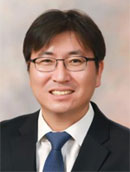 Lee, Kyu Tae
Lee, Kyu Tae- Position: Associate Professor
- Major: Electrochemistry, Solid State Chemistry
- Office: Building 302, Room 812 | Electrochemical Energy System Lab.
- E-mail: ktlee@snu.ac.kr
- Tel: +82-2-880-9386
We are developing a new electrode material for rechargeable batteries for electric vehicles and portable electronic devices. Also, we are pursuing research to improve the cell performance of electrode material through synthesis of new electrode material, analysis of its electrode material, and electrochemical characterization based on electrochemistry and solid chemistry.
-
 Lee, Won Bo
Lee, Won Bo- Position: Professor
- Major: Soft Matter Physics
- Office: Building 302, Room 814
- E-mail: wblee@snu.ac.kr
- Tel: +82-2-880-7076
We are studying how the structure of molecules and their interactions affect the microscopic and macroscopic behavior. For this purpose, we focus on understanding the molecular phenomena of a system and its qualitative and quantitative properties by developing and simulating various theories and numerical methods. We also use statistical mechanics to elucidate how thermodynamic behavior of molecules in equilibrium or non-equilibrium states can be interpreted as parameters of molecules. These studies will ultimately become tools for predicting its static and dynamic properties when designing new molecules.
-
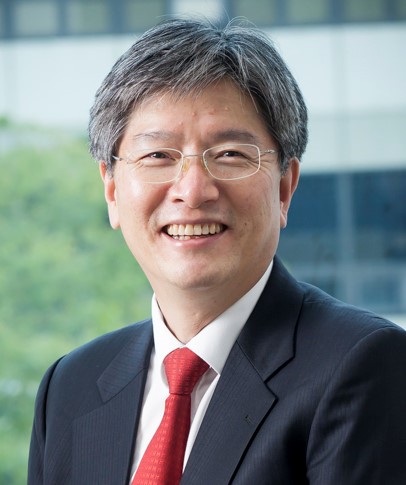 Lee, Youn-Woo
Lee, Youn-Woo- Position: Professor
- Major: Supercritical Fluid Technology
- Office: Building 302, Room 726 l Supercritical Fluid Process Lab.
- E-mail: ywlee@snu.ac.kr
- Tel: +82-2-880-1883
The Supercritical Fluid Process Laboratory explores the use of supercritical fluids as environmentally acceptable alternatives to conventional solvents for chemical and physical processes. The current areas of application for supercritical fluids include particle design, material synthesis, chemical reactions, polymerization, separations, waste destruction, and cleaning.
-
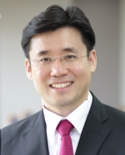 Nam, Jaewook
Nam, Jaewook- Position: Associate Professor
- Major: Advanced Material Processing
- Office: Building 302, Room 917 | Microfluidics and Coating Process Laboratory
- E-mail: jaewooknam@snu.ac.kr
- Tel: +82-2-880-1654
Our goal is to perform creative research for analyzing and understanding transport phenomena through experiment, theory, and computation. We are particularly interested in developing novel numerical and experimental techniques to understand microscale flow phenomena with liquid/gas interfaces and particles. Through the fundamental understanding of such phenomena, we are aiming to design novel processes, in particular for the high-performance film production.
-
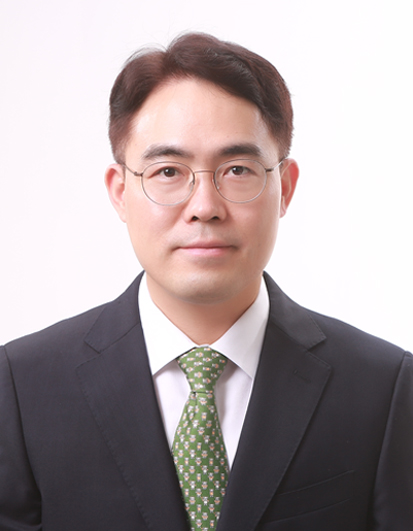 Oh, Joon Hak
Oh, Joon Hak- Position: Professor
- Major: Organic & Polymer Electronics
- Office: Building 302, Room 815 | Organic & Polymer Electronics Lab.
- E-mail: joonhoh@snu.ac.kr
- Tel: +82-2-880-8641
Our research group focuses on synthesizing organic and polymeric materials and their applications in electronics, energy conversion and storage, environmental science, and biomedical applications. Our current research interests encompass nanomaterials and nanoelectronics, organic field-effect transistors, advanced optoelectronics utilizing chiral materials and plasmonic nanostructures, organic and perovskite solar cells, flexible and stretchable sensors for wearable electronics and bioelectronics, and lithium-ion batteries.
-
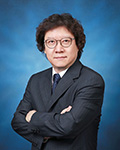 Paik, Seung Ryeoul
Paik, Seung Ryeoul- Position: Professor
- Major: Biochemistry
- Office: Building 302, Room 911 l Advanced Protein Materials Lab
- E-mail: srpaik@snu.ac.kr
- Tel: +82-2-880-7402
We are studying the composition of electrolytes in copper electroplating in semiconductor processing, especially the effects of additives on copper crystallinity and thin film properties, and the filling of silicon through electrodes (TSV). Furthermore, the research focuses on studying the mechanism of action and degradation of plating additives. Also, as a research on the planarization process and the subsequent cleaning process in the semiconductor process, we are working on the cleaning process on the metal substrate and the silicon base substrate using the reactivity of the metal. In addition, research is being conducted on the application of electrochemically synthesized catalysts to carbon dioxide reduction, electrolysis, and the like.
-
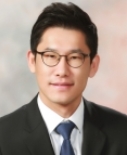 Park, Jungwon
Park, Jungwon- Position: Associate Professor
- Major: Physical Chemistry of Materials
- Office: Building 302, Room 813
- E-mail: jungwonpark@snu.ac.kr
- Tel: +82-2-880-2259
Our group focuses on studying physical and chemical reactions of nanomaterials by using multi-dimensional analytical approaches. We aim to elucidate structure-function relationship of nanomaterials from the fundamental level to the level of practical application. By combining in situ liquid phase TEM, ab-initio structure reconstruction method, and theoretical calculation, we correlate nanomaterial structures and their behaviors in catalyst, optical activities, and energy applications. We also study crystallization, interactions, and structures occurring in many systems of chemical engineering including polymers, colloids, nanoparticles, macromolecules, and biomolecules. Furthermore, we develop synthetic methods for low dimensional materials in catalysis, battery systems, and next generation electronic devices by utilizing in situ TEM to solve engineering issues relevant to their surfaces and interfaces.
-
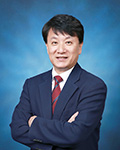 Park, Tai Hyun
Park, Tai Hyun- Position: Professor
- Major: Bioengineering
- Office: Building 302, Room 918
- E-mail: thpark@snu.ac.kr
- Tel: +82-2-880-8020
l Development of Artificial Olfactory and Gustatory Systems
The goal of our research is to develop artificial olfactory/gustatory systems based on human olfactory/gustatory receptors. Ultrasensitive artificial olfactory/gustatory systems are constructed by combining the olfactory/gustatory receptors with nanosensor platforms such as carbon nanotubes, conducting nanopolymers and graphenes.
l Cellular Engineering and Animal Cell Culture
This research focuses on the control of cellular behavior and differentiation using 30Kc19 protein. We also use ECM (extracellular matrix) produced from cell lines. These biomaterials are being studied for applications to biomedical and tissue engineering fields. -
 Seo, Sang Woo
Seo, Sang Woo- Position: Associate Professor
- Major: Systems and Synthetic Biology
- Office: Building 302, Room 727
- E-mail: swseo@snu.ac.kr
- Tel: +82-2-880-2274
We research in the fields of synthetic biology and systems biology. Particularly, we are interested in applying synthetic and systems biology approaches to elucidate and redesign complex regulatory networks of microorganisms i) for the production of chemicals, fuels, pharmaceuticals, and therapeutics, ii) for environmental bio-remediation, and iii) for biomedical applications.
-
 Sung, Yung-Eun
Sung, Yung-Eun- Position: Professor
- Major: Electrochemical Energy
- Office: Building 302, Room 721
- E-mail: ysung@snu.ac.kr
- Tel: +82-2-880-1889
Main studies of Prof. Sung’s group include the electrochemical analyses of novel energy conversion system (fuel cell, water electrolyzer, CO2 reduction etc.) catalysts and the analyses of the structure and the interface between electrode and electrolyte in lithium ion battery system. In addition, the group focuses on the design and the development of non-noble metal catalysts for fuel cell and novel electrode materials for advanced battery systems, which encompass lithium sulfur battery and sodium ion battery.
-
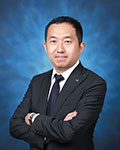 Yoo, Dongwon
Yoo, Dongwon- Position: Assistant Professor
- Major: Organic Synthesis
- Office: Building 302, Room 722 | Organic Synthesis & Molecular Engineering Lab.
- E-mail: dwyoo@snu.ac.kr
- Tel: +82-2-880-1898
The research in my group is currently engaged in two general fields of interest: 1) developing new synthetic methods for biologically active products and 2) bio-medical engineering for diagnosis and therapy. First, we focus on photo-catalyzed and tandem reactions using nanoscale heterogeneous catalysts. The characteristics and roles of catalysts in various organic chemical transformations are identified and applied to a wide range of biologically active compounds. Second, we utilize organic synthetic methodologies to develop biomolecules, including small molecule cancer drugs, MRI contrast agents, nano delivery vehicles, and nano-bio sensors for diagnostic and therapeutic purposes.
-
 Yoon, Jeyong
Yoon, Jeyong- Position: Professor
- Major: Civil Engineering
- Office: Building 302, Room 810 | Water Environment & Energy Lab
- E-mail: jeyong@snu.ac.kr
- Tel: +82-2-880-8927
Our research group’s primary goal is to solve global water and energy problems by developing convergence technology based on environmental engineering, electrochemical and energy technology. Desalination research is based on capacitive deionization to deionize water, and to recover energy. The study on safe water engages electrochemical reaction including oxidant generation to purify water. Resource recovery intends to extract valuable metals from brine water, seawater, or wastewater. Overall, our group aims to enhance the quality of human life with future-oriented convergence technology.